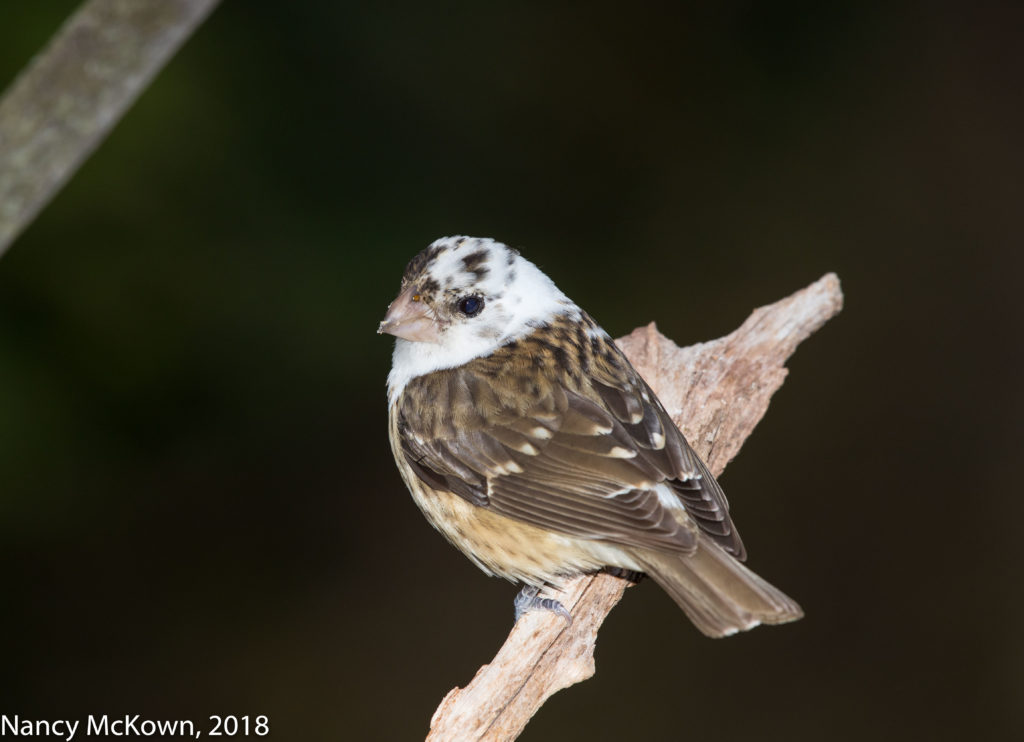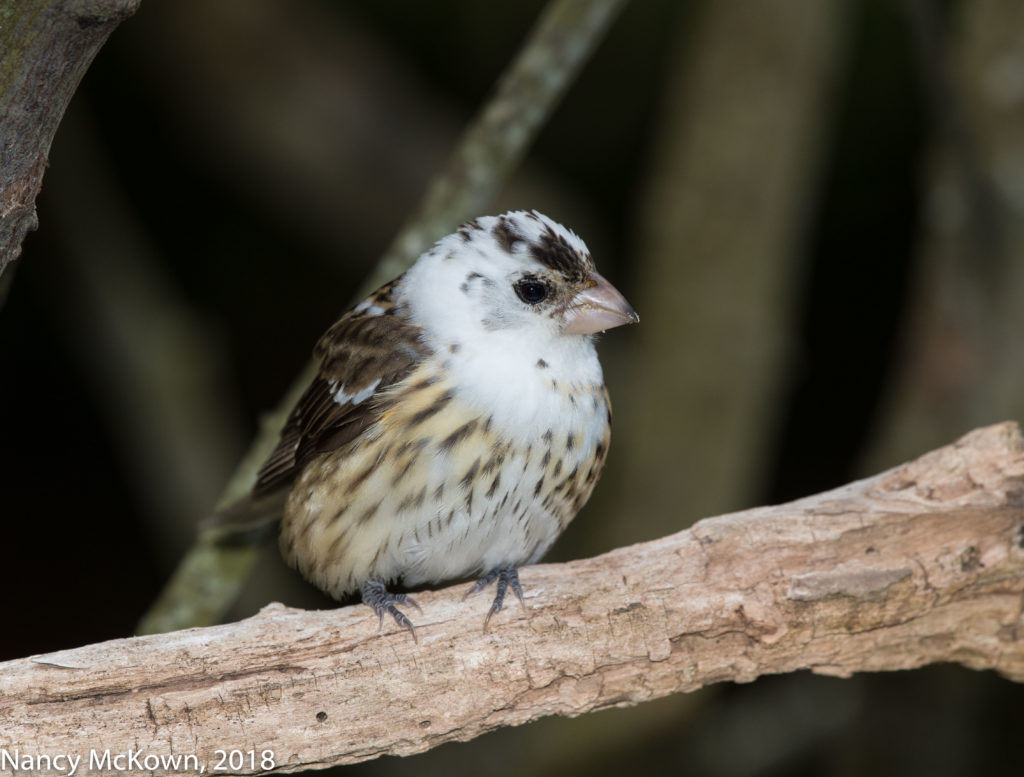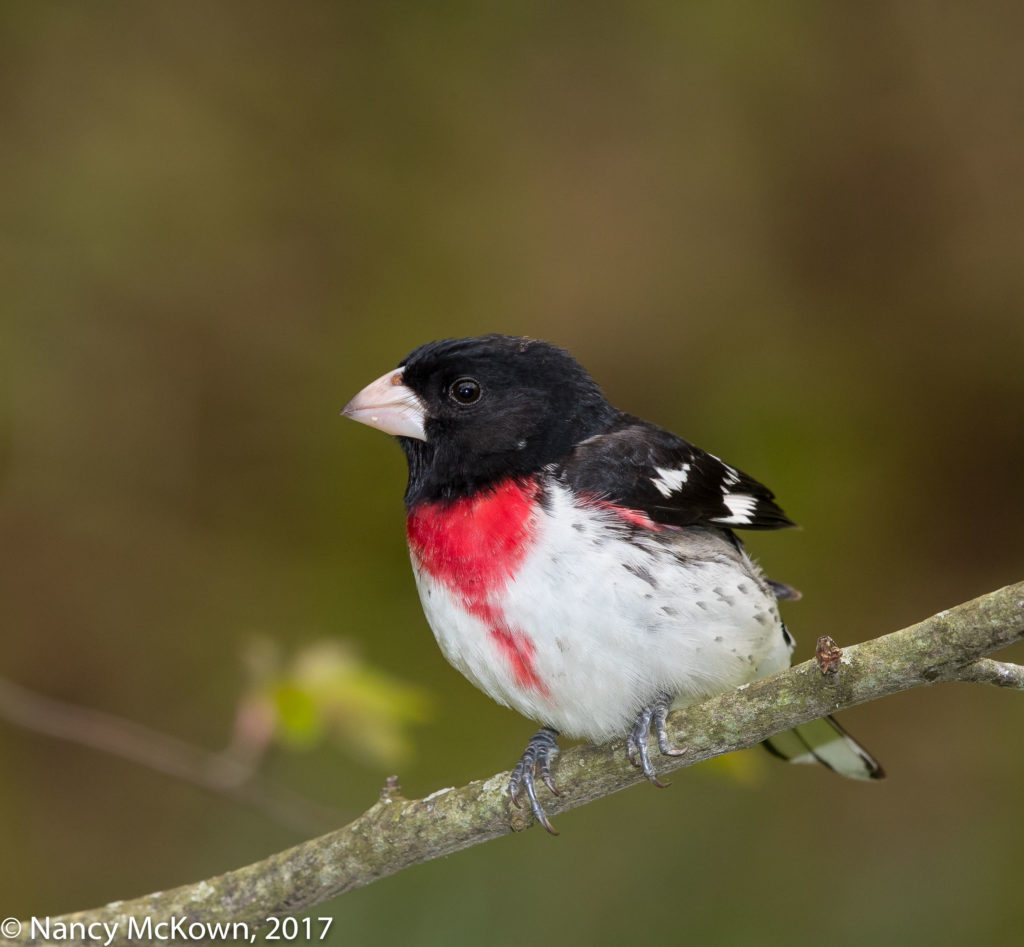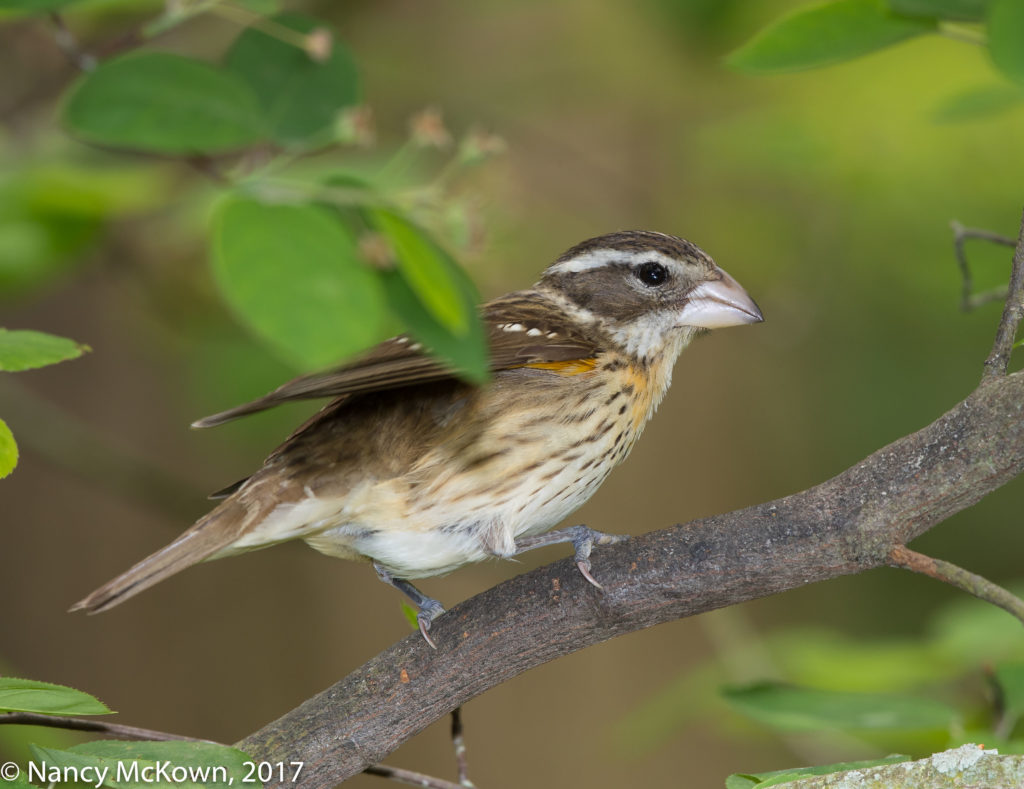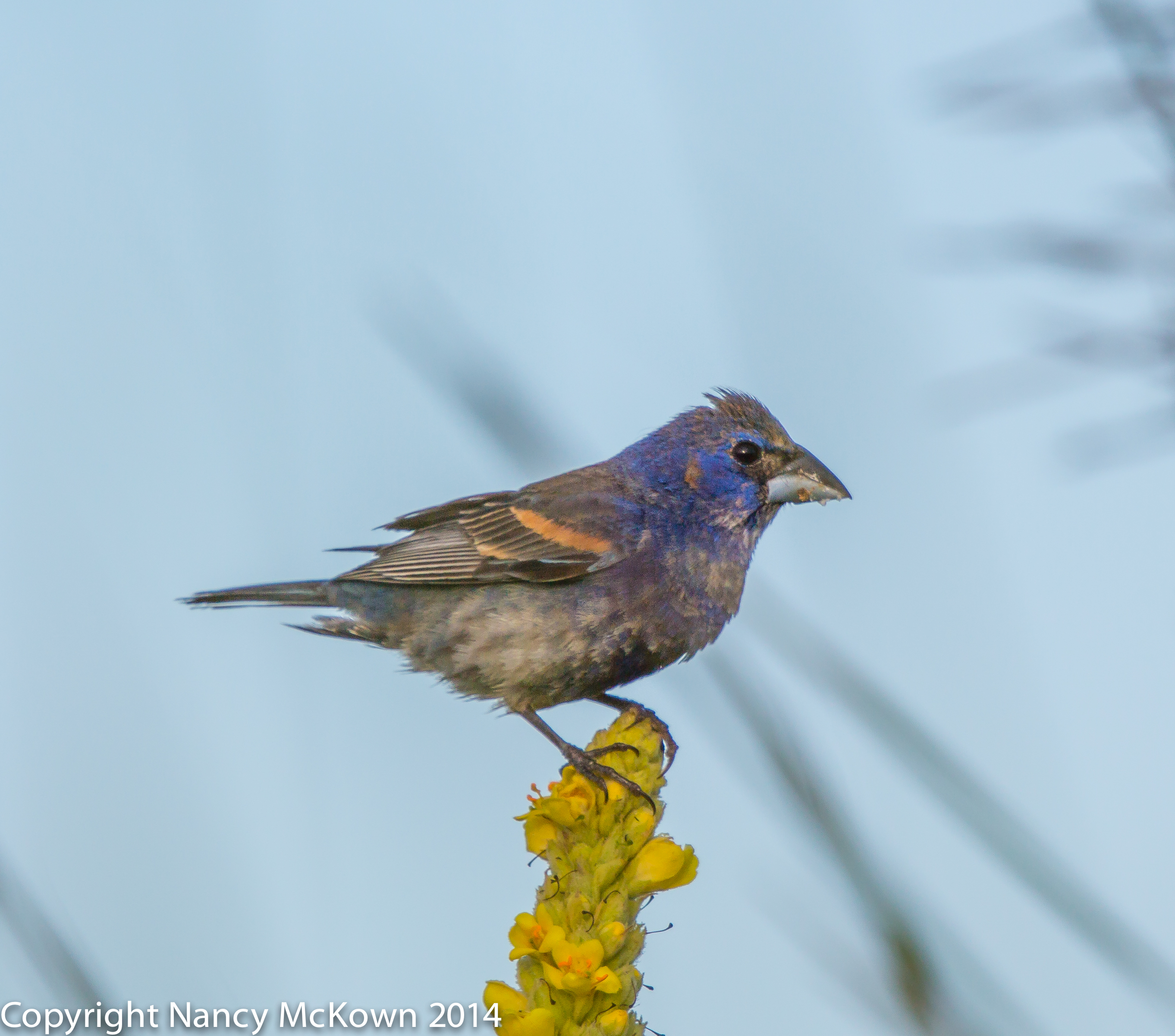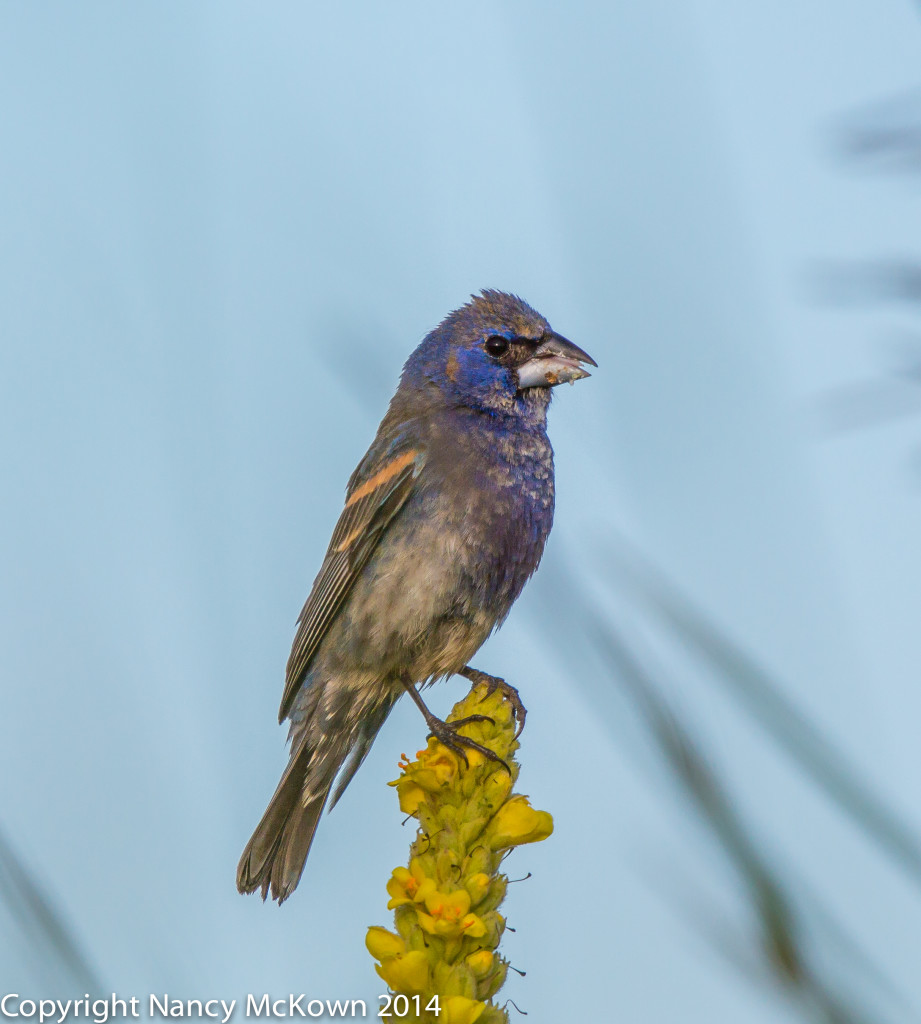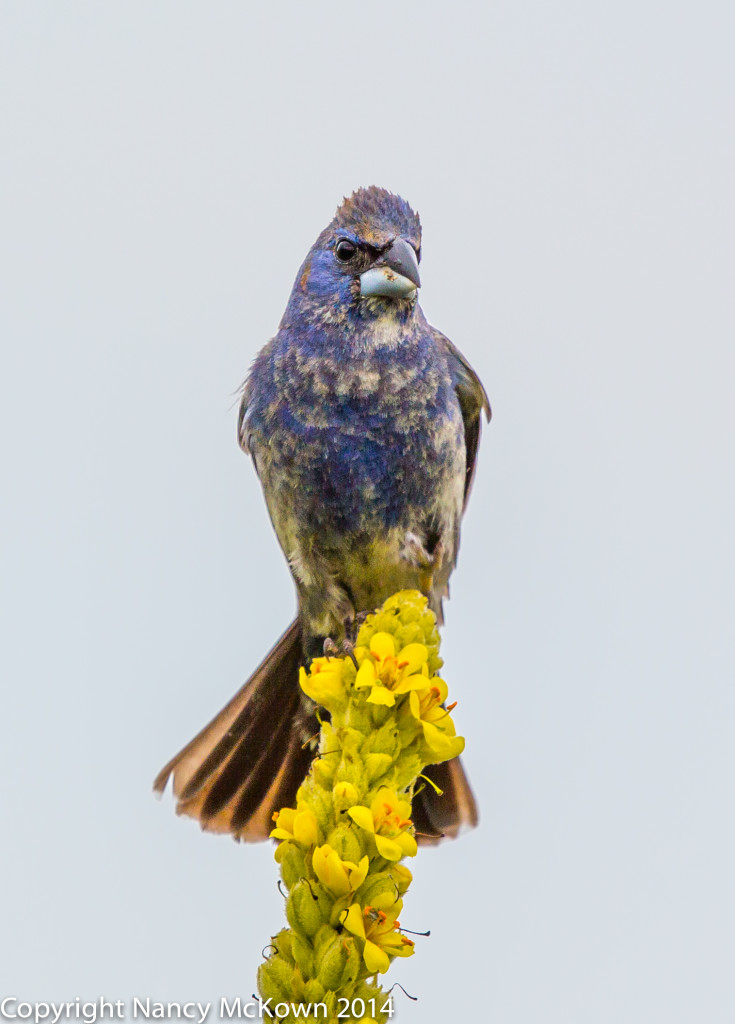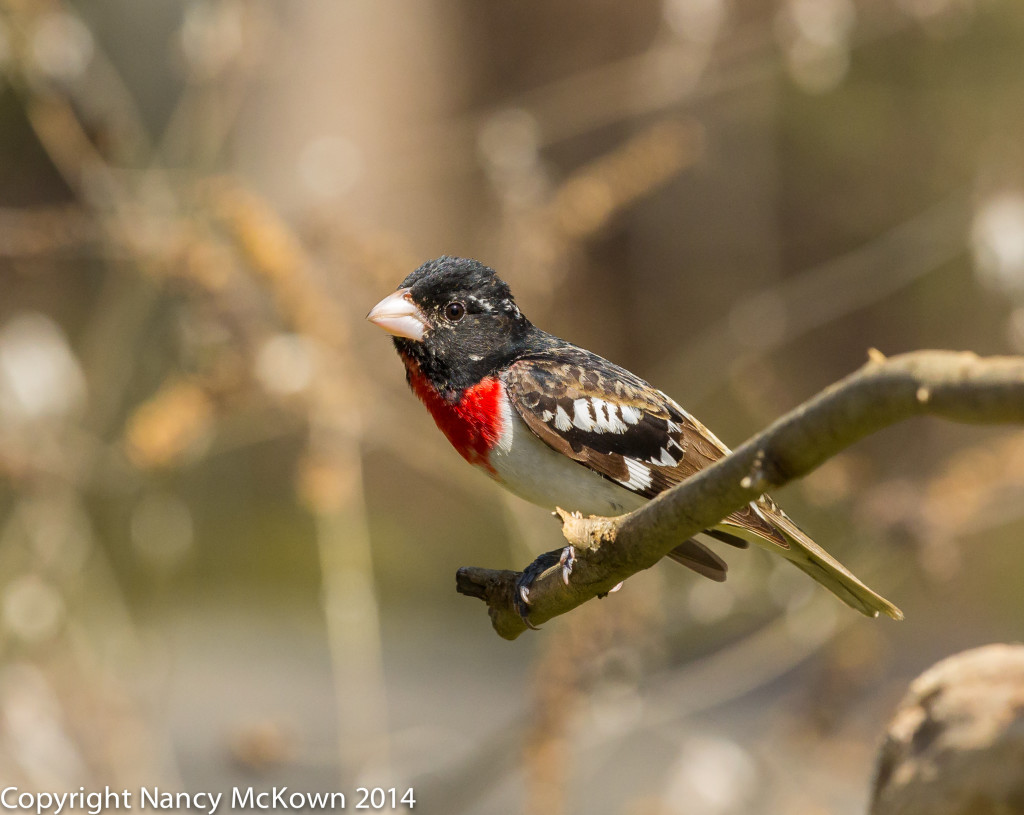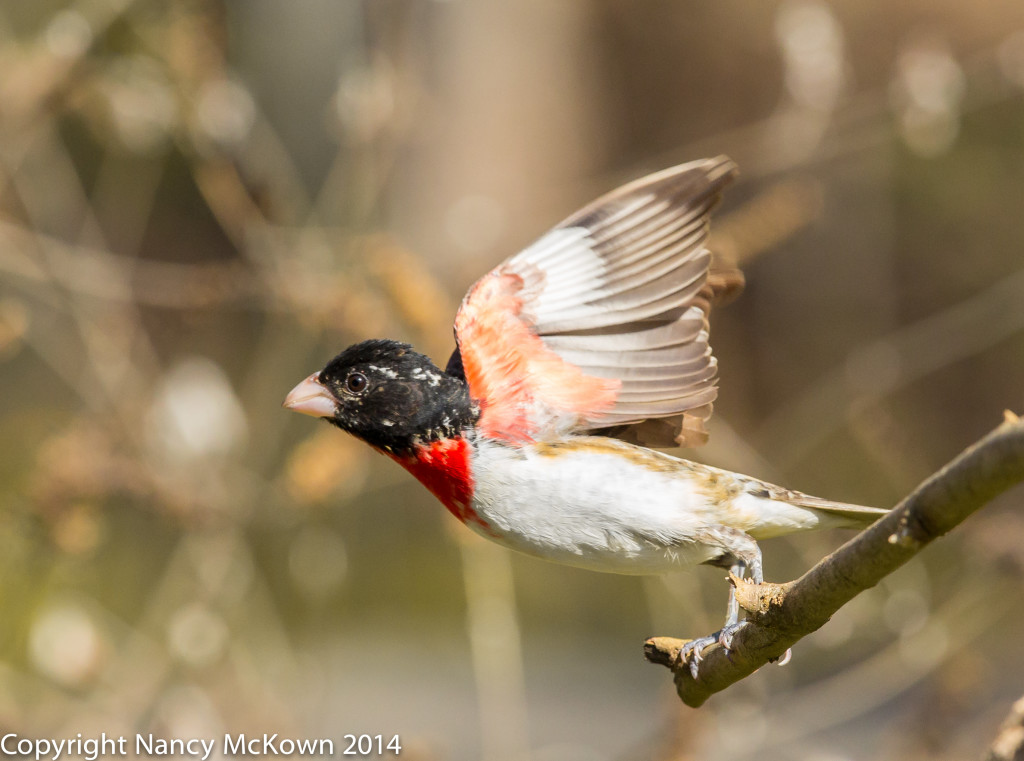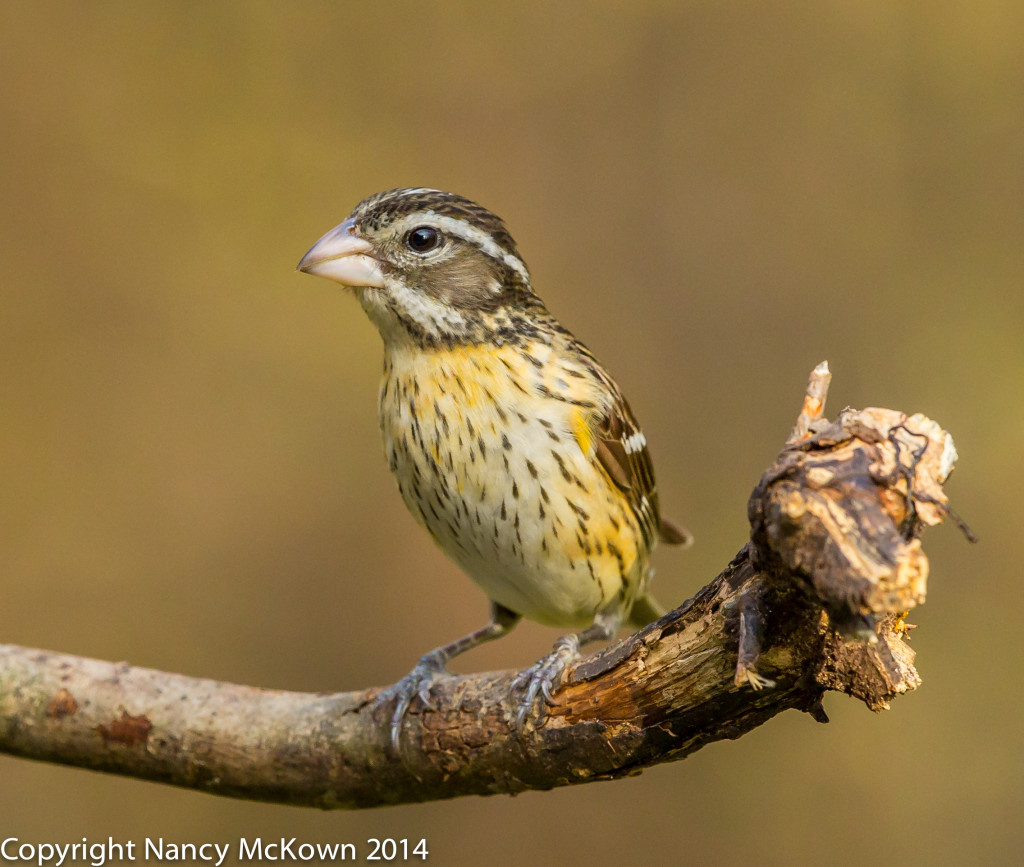Photographing an Evening Grosbeak
We were in the visitors’ center at Hartwick Pines State Park when this striking Evening Grosbeak with a resplendent yellow eye brow and greenish bill made an appearance at their feeders. I have never seen an Evening Grosbeak in SW Michigan, but according to the e-bird maps, this species makes bi annual visits through most of Michigan as it travels to and from its breeding grounds. (NOTE: That green pigment on his upper and lower mandibles appears in the breeding season. As the season progresses, the membranes on the beak peel away and by winter, reveal a bone-colored beak.)
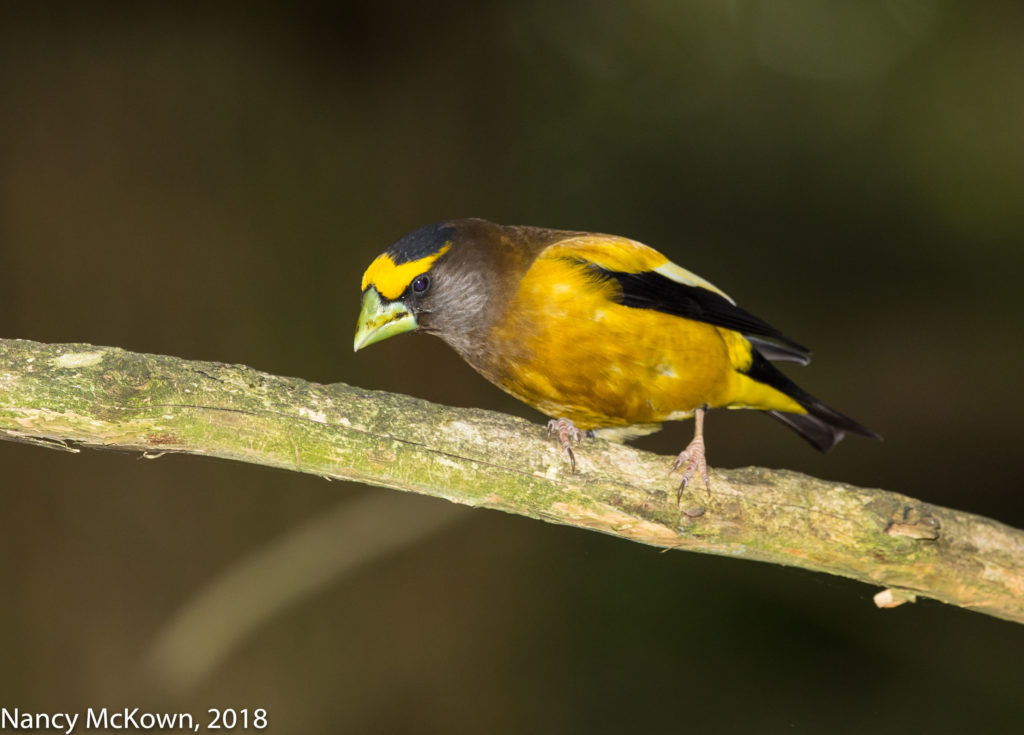
ISO400; f/7.1; 1/200 Second
with Flash
Soggy Weather
The camera was setup on the balcony of the visitors’ center. The thick cloud cover and saturating mist didn’t make for the best light conditions, so the flash gear was attached. While waiting for the Evening Grosbeaks to perch on something other than the feeders, I started wondering what I would do if the rain got heavier…and why I did not anticipate soggy weather.
Just how much rain and condensation can the camera, lens and flash gear safely endure?Canon professional equipment is suppose to be “weather sealed” and somewhat protected from mechanical and electronic damage caused by moisture and dust. That doesn’t mean that the tight rubber sealing around the various buttons, ports, joints and doors make them weather proof, especially for an extended period of time.
The rain continued unabated, so shortly after I photographed this male Evening Grosbeak, I picked up the tripod and moved inside to tear down and pack it away.
Rain Gear
I’m now in the market for a form-fitting, wind breaker type nylon jacket or camera cover that is flexible and easy to attach. (NOTE: It does not have to accommodate driving rain.) It should be designed to work with both tripods and hand holding, allow me to change long lenses and tele extenders on the fly, give me easy access to camera controls, and accommodate flash gear. Most of all it can not interfere with my picture taking habits and routines.
Too much to ask? Sounds like in order to get this kind of relief from the rain, I need a canopy– in which case, I might as well get out my blind and campy chair. I will, however check out the large or extra large Vortex Media Pro SLR Storm Jacket Camera Cover. It looks like it might fit most of my requirements for under $50.00
Resilience and Tenacity
Watching the birds interacting with their environment and visualizing possible scenarios to photograph constitute a lot of what bird photographers do. Then comes the strategizing and setting up to actualize those dreams. Rain or shine, there’s always a chance that you will be in the right place at the right time with the right equipment.. and you get the shot.
